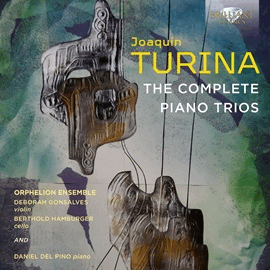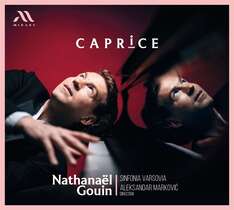« Caprice! Dieser Titel ist eine Allegorie auf Freiheit, Verlangen und natürlich auf die musikalische Virtuosität in all ihren Formen », sagt der französische Pianist Nathanaël Gouin über diese CD.
Nun fehlt es sicher nicht an hervorragenden Paganini-Rhapsodien in den Schallplattenkatalogen. Und eine der besten mag wohl die Aufnahme von Trifonov und Nézet-Séguin sein, aber sie ist nicht attraktiver als die neue Einspielung mit Gouin und der Sinfonia Varsovia unter Aleksandar Markovic. Diese hat nämlich eine schalkhafte Grundstimmung, die den Hörer ständig schmunzeln lässt. Die Paganini-Rhapsodie als musikalischer Spaß, auch wenn Nachdenklichkeit, Nostalgie und Wehmut nicht fehlen.
Nicht weniger frei und gestalterisch intensiv geht Gouin mit den Solostücken um, mit einem hinreißenden Bach-Capriccio, einem frischen und spannenden Brahms, und selbst Alkans Le Festin d’Esope kann Gouin mehr abgewinnen als pure Virtuosität.
Ein besonderer Leckerbissen ist die Ersteinspielung von Reynaldo Hahns Mignouminek, einem Stück aus dem Jahre 1943, das lange verschollen war, weil es in den Archiven der Abtei von Royaumont schlummerte.
« Caprice! This title is an allegory of freedom, desire and, of course, musical virtuosity in all its forms, » says French pianist Nathanaël Gouin about this CD.
There is certainly no shortage of excellent Paganini Rhapsodies in the recording catalogs. And one of the best may well be the recording by Trifonov and Nézet-Séguin, but it is no more attractive than the new recording with Gouin and the Sinfonia Varsovia under Aleksandar Markovic. The latter has a mischievous mood that constantly makes the listener smile. This Paganini Rhapsody is, at least for me, musical fun, even if pensiveness, nostalgia and melancholy are not missing.
Gouin is no less free and creative in his approach to the solo pieces, with a captivating Bach Capriccio, a fresh and exciting Brahms, and even Alkan’s Le Festin d’Esope has more to offer than pure virtuosity.
A special treat is the first recording of Reynaldo Hahn’s Mignouminek, a piece from 1943 that was long lost because it was hidden in the archives of Royaumont Abbey.


















